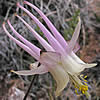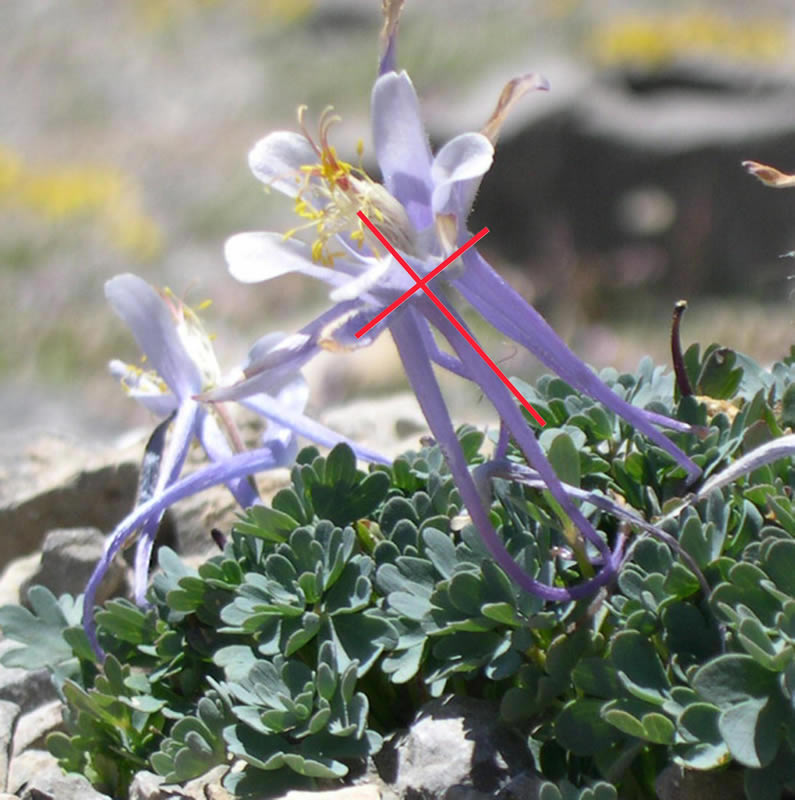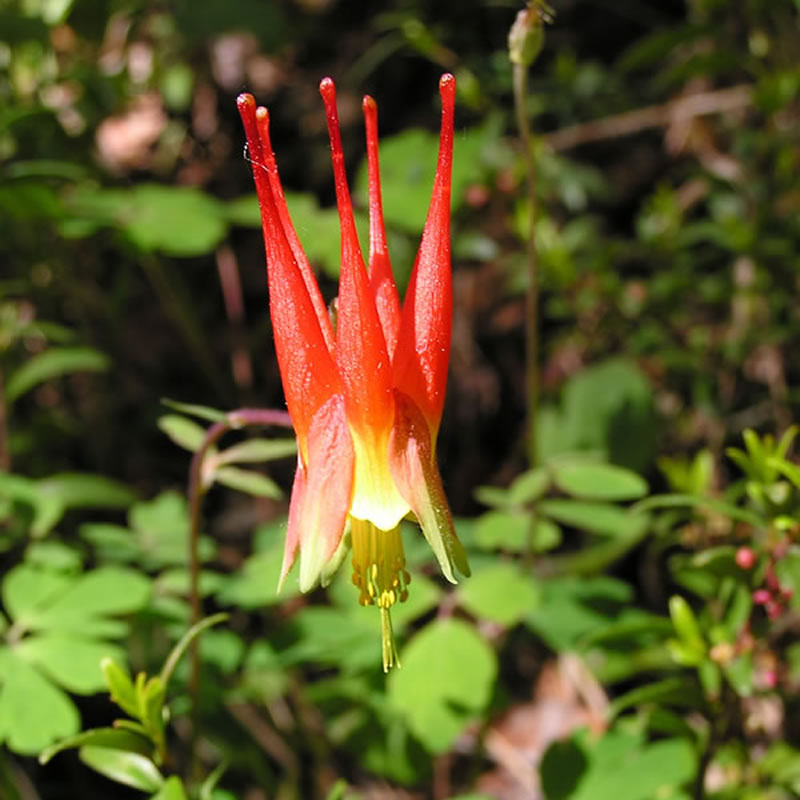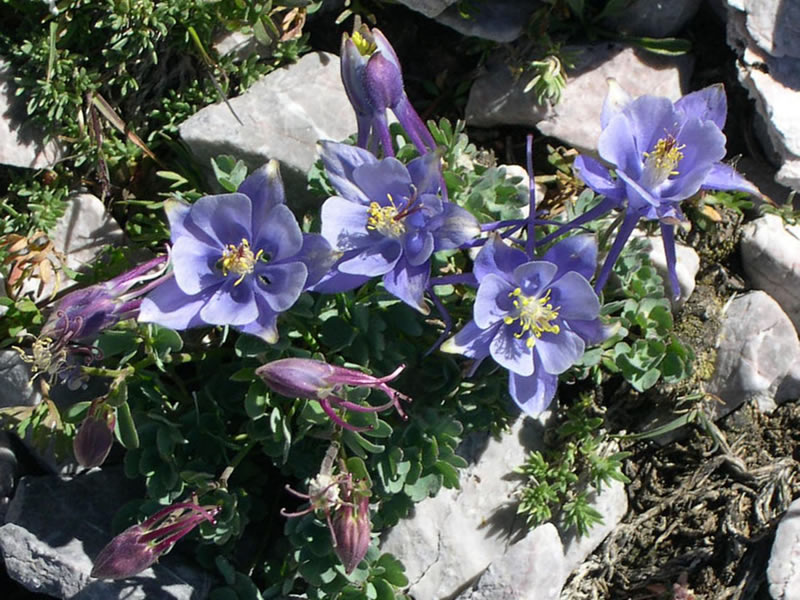Aquilegia Express: The Columbine Flower
Arrival of the genus Aquilegia into North America is a recent event occurring 10,000 to 40,000 years ago during the Pleistocene. Columbines crossed into North America from Asia over the Bering land bridge that connected the two continents during that period. A progenitor columbine began to radiate rapidly out of Alaska and throughout the North American continent. As the columbines were moving through out the continent, new species developed.
As with Darwin’s finches, columbines developed similar but differently shaped and colored flowers in response to newly encountered habitats and pollinators. They developed different positions for presenting their flowers, sepals, and spurs, and different spur shapes in response to their primary pollinator.
Flower Presentation
Columbines present their flowers in “nodding” or erect positions.
Sepal Position
The following images display the four types of sepal positioning in relationship to the floral axis: straight, spreading, perpendicular, and reflexed.
Spur Positioning
There are five types of spur positioning in relationship to the floral axis: a) straight and not spreading; b) straight and spreading; c) curved and spreading; d) hooked and spreading; and, e) hooked and not spreading.
 a) Aquilegia micrantha. Photo by Al Schneider.
a) Aquilegia micrantha. Photo by Al Schneider.
Spur Shapes
There are a range of columbine spur shapes describing their thickness and length
For More Information
- Aquilegia in Flora of North America
- PLANTS Classification for Kingdom Plantae Down to Genus Aquilegia L.




















